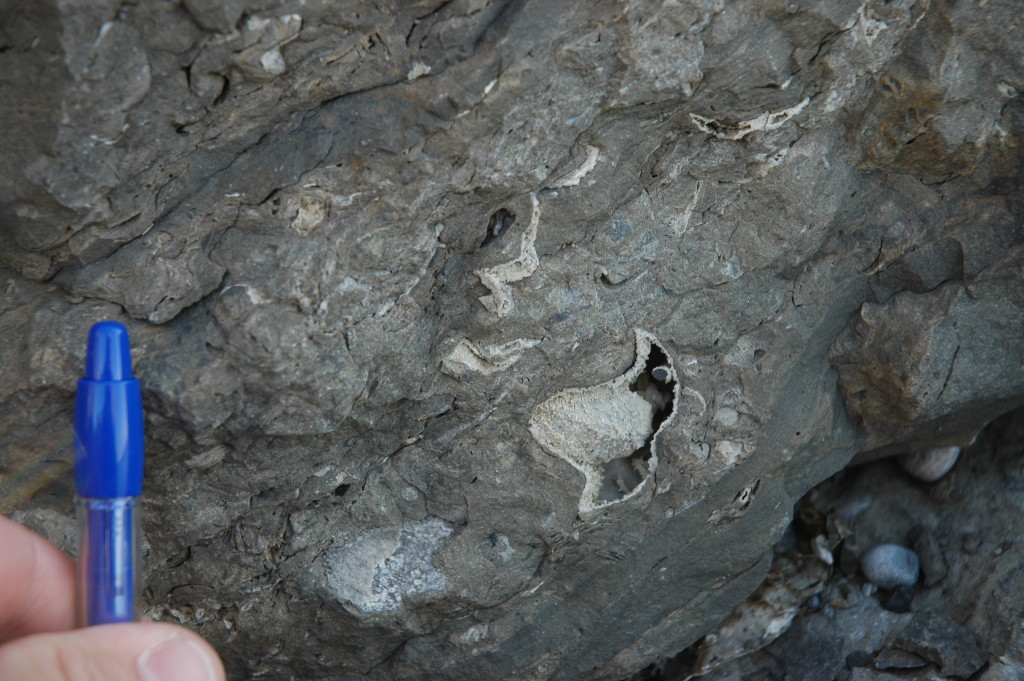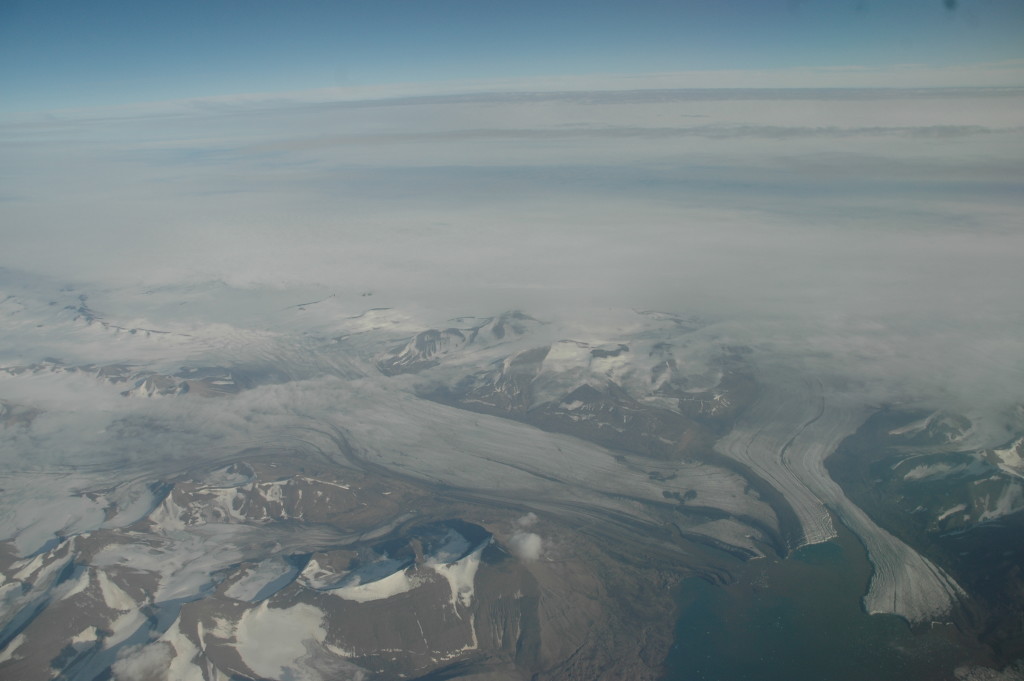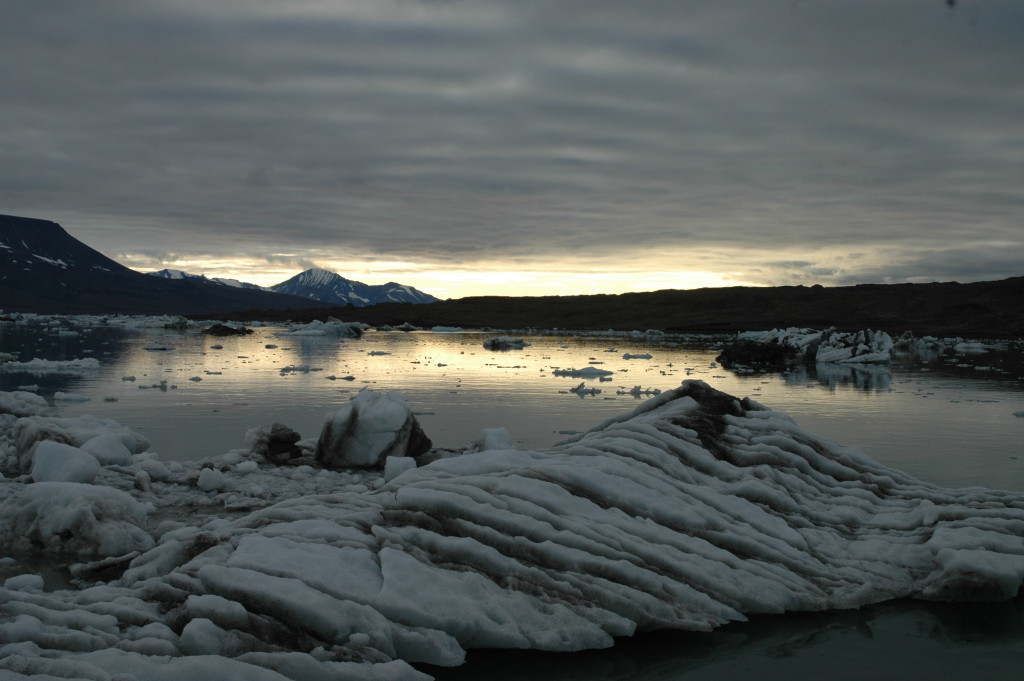Svalbard. What comes to mind? Polar bears that eat kids alive if they don’t carry guns in the settlement. Which they do. At least the parents. Dark as a coal mine half the year, even outside the coal mines. Bright as sun 24/7 the other half because…well, there is sun 24/7. Cheap booze. Cute, cuddly round reindeers. Stupid tourists.
And awesome geology. Norwegians, used to the hard basement and nappe bedrock of the mainland, get enthralled by the beauty of the sedimentary rocks. Most tourists let it be at that, sediments and coal mines, but Svalbard offers geology all the way from the Precambrian, from tropical coral reefs to the cold glaciers of today.
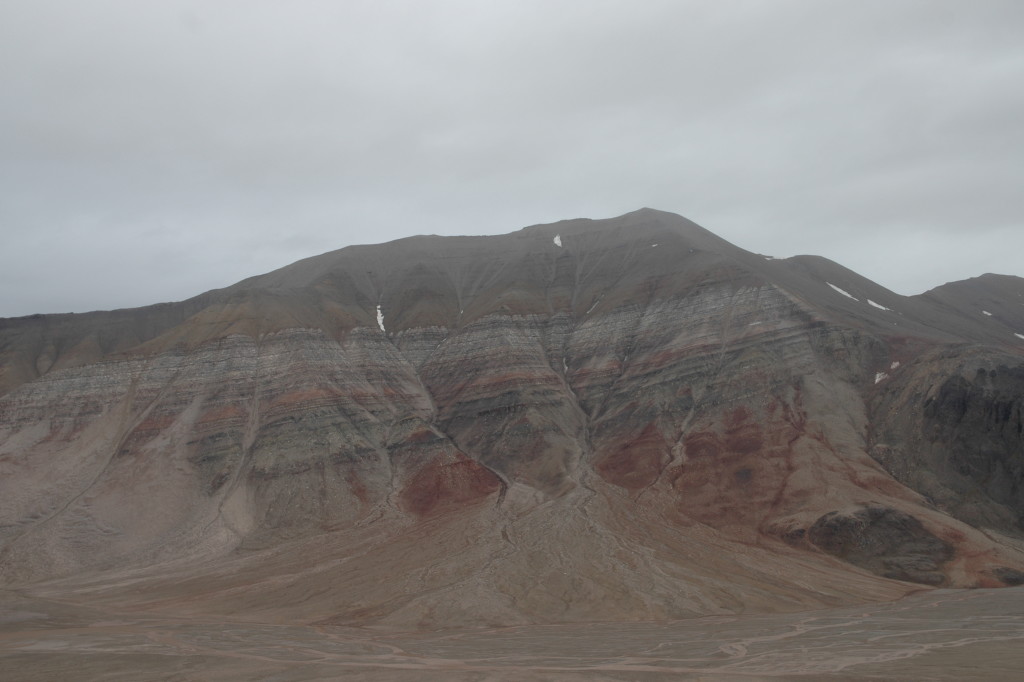
The Tricolorfjellet mountain in Billefjorden, Svalbard, with Carboniferous evaporites and eolian sandstone.
Through the last year, I ran a series on my blog, www.karsteneig.no, a journey through the geological history of Svalbard, based on several visits to the archipelago. There are rift basins with deserts and salt, like very dry areas of the Gulf or Rift Valley today. Coal from old swamps, coral reefs, fine shale from a deep shelf, where we can follow the advance of a coastline until sea becomes land with dinosaurs. And you will see how a small mountain chain came by, when Svalbard squeezed by Greenland. All beautifully exposed, thanks to almost no vegetation, courtesy of the cold climate. Enjoy!
Cold seams: The Carboniferous of Svalbard
Fjordblock island: The Upper Permian of Svalbard
How to see 170 million years in two kilometres: The world-famous Festningen profile
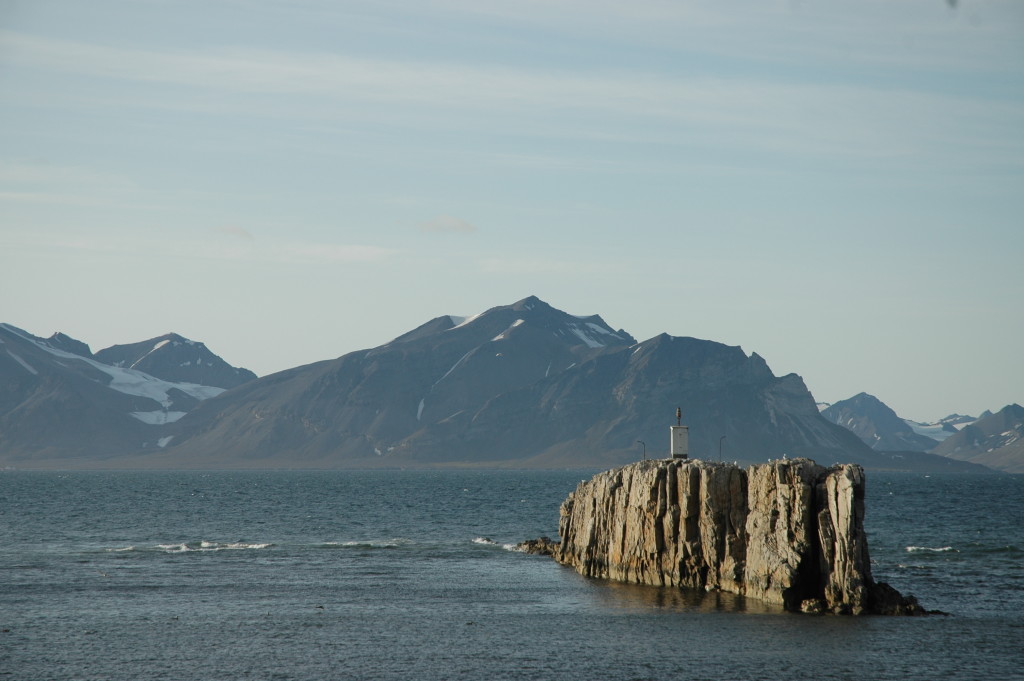
Festningen – The Fortress – a pillar of hard, Cretaceous fluvial sandstone, tilted vertical by Svalbard’s clash with Greenland.
When Greenland met Svalbard: A geological love story
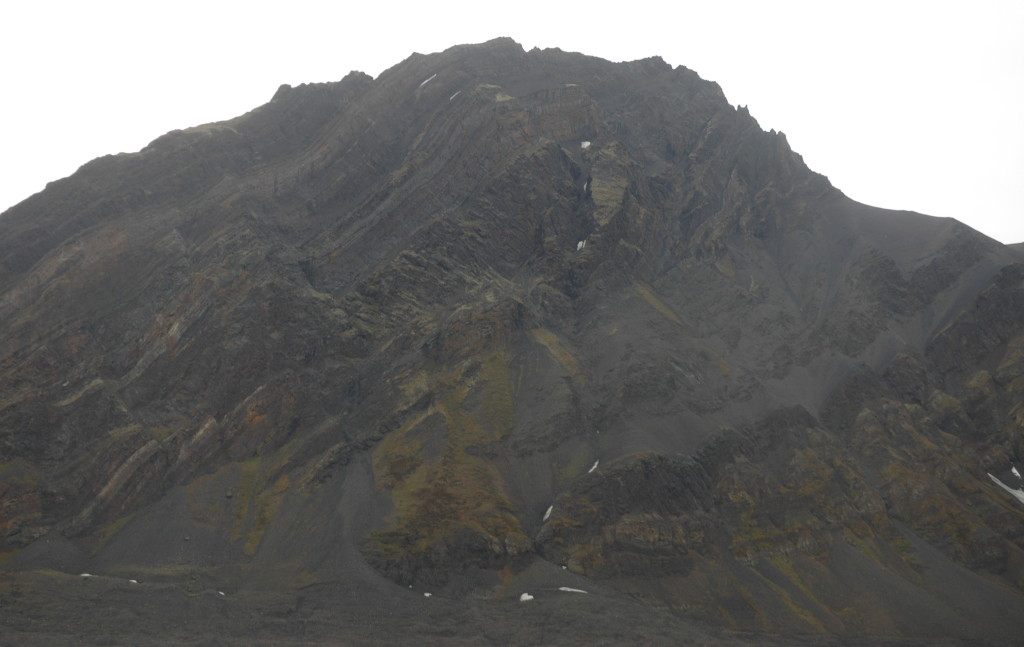
The Mediumfjellet thrust, on the North side of Isfjorden, Svalbard: Permian evaporite, Triassic shale and sand, intruded by a Cretaceous dolerite, and then thrusted up by the compression from Greenland.
A visit to Mordor – a.k.a. Hornsund, Svalbard
Politics in stone: Svalbard’s Cenozoic coal
![]() This work is licensed under a Creative Commons Attribution-NonCommercial-ShareAlike 4.0 International License.
This work is licensed under a Creative Commons Attribution-NonCommercial-ShareAlike 4.0 International License.

